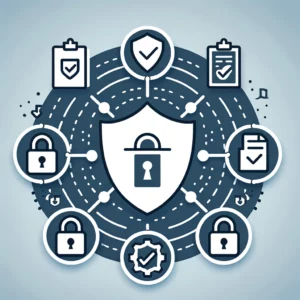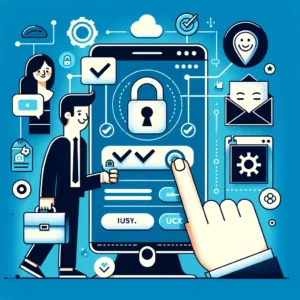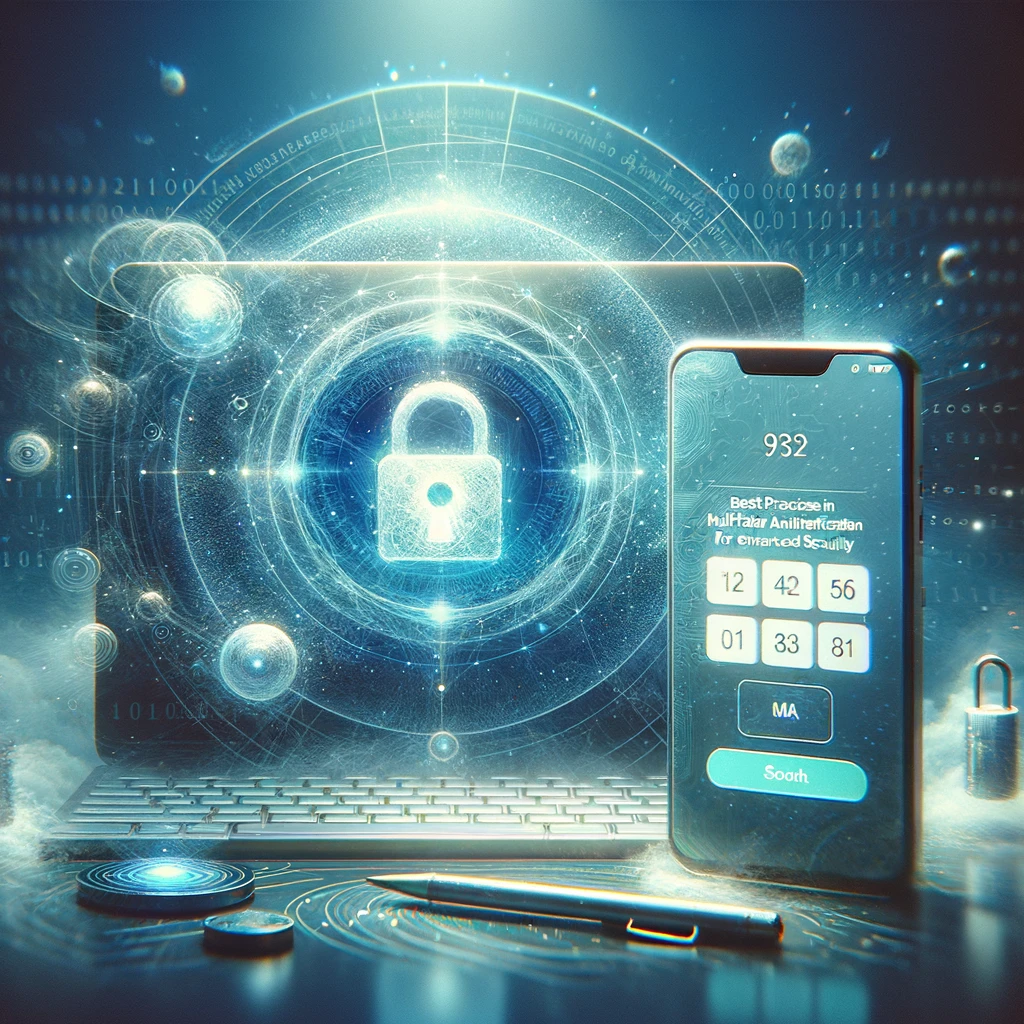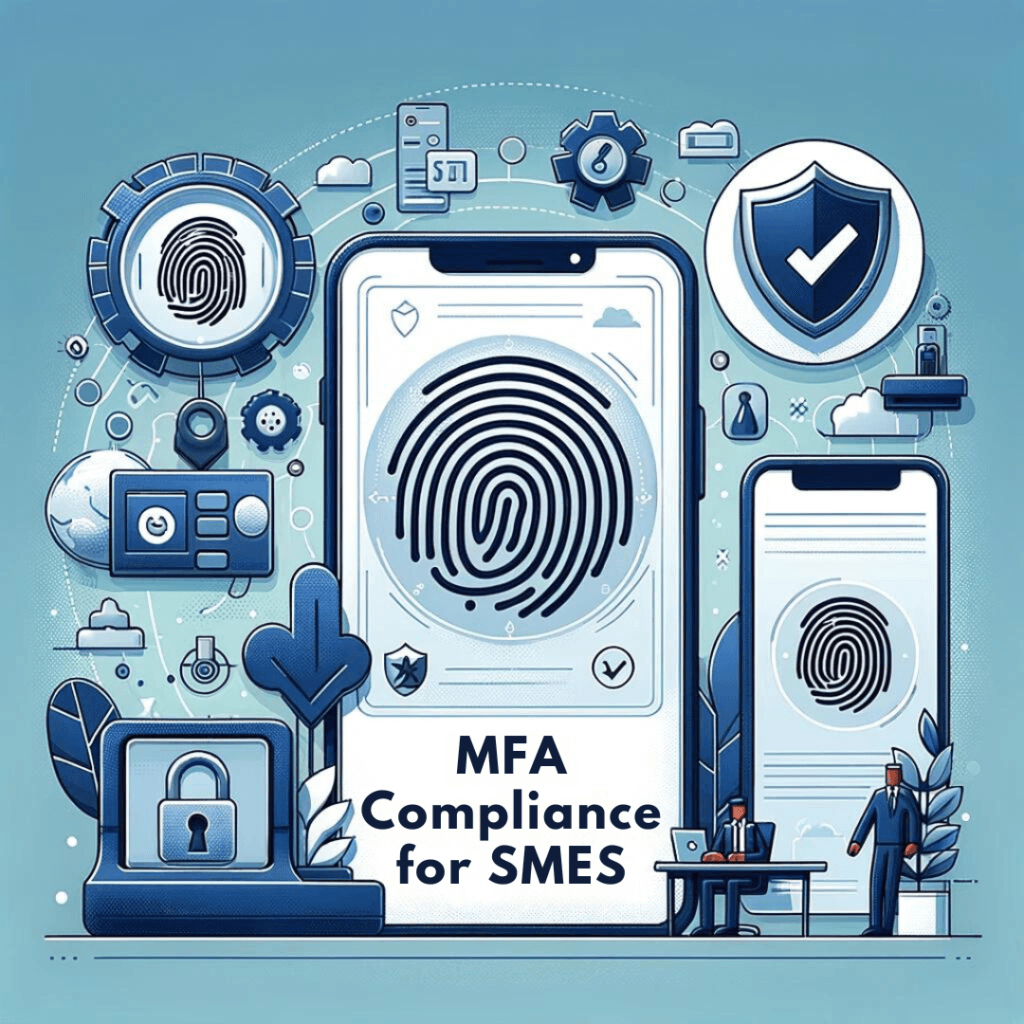Have you ever considered how a simple extra step in your login process could significantly bolster your security? That’s the power of Multi-Factor Authentication or MFA. It’s an added layer beyond your usual password, a gatekeeper to ensure that you, and only you, have access to your accounts. Let’s explore Multi-Factor Authentication Benefits.
Key Takeaways
- Robust Security: MFA significantly enhances security by requiring multiple forms of verification, making it much harder for unauthorized access even if a password is compromised.
- Adaptability: Adaptive MFA adjusts the authentication methods based on contextual factors like location and device, thus optimizing security dynamically.
- Diverse Authentication Methods: MFA includes various methods such as codes from emails or texts, authenticator apps, biometric data, and physical security keys, catering to different security needs and preferences.
What is MFA?
MFA adds additional security layers. The possible layers are:
– Something you know
– Something you are
– Somewhere you are
– Something you have
– Something you do
MFA vs 2FA: Why are these better than Traditional Security Methods?
Unlike the singular protection offered by traditional passwords, MFA requires one or more additional verification factors. Think of it this way: If a password is a single lock on your security door, MFA adds a deadbolt and an alarm system. Meanwhile, 2FA, or Two-Factor Authentication, is like having just the deadbolt. MFA goes even further by employing multiple locks.
MFA can be two or more authentication factors. For instance, it can monitor where and what time it is. Based on your initial authentication it can decide that this person can/cannot access this site. Then it can ask you to input a code. Either one you were sent via text or email, or one from an authentication app. This is actually called adaptive MFA. Adaptive MFA enhances security by using multiple methods to verify user identity, adapting based on contextual data like user location, device, and behavior.
Today, simple passwords no longer suffice. Data breaches are too common, and hackers are growing more sophisticated by the day. MFA stands out as a robust defense mechanism that adapts to the evolving threat landscape, protecting personal and business data from unauthorized access.
Varieties of Multi-Factor Authentication
When it comes to fortifying digital security, not all tools are created equal. Multi-factor authentication, or MFA, comes in several different shapes and sizes – each designed to cater to various needs and security protocols. Let’s explore the benefits of mfa solutions.

MFA as Codes from Email or Text
For starters, one of the most familiar MFA methods is receiving codes via email or text. It’s a straightforward system where a code sent to your email or phone adds an extra step of verification.
Authenticator Apps as MFA
Next up are authenticator apps. These are becoming increasingly popular due to their convenience and added security layer. They generate time-sensitive codes on your device, which you use only once during the authentication process.
Biometric Authentication: Something that you are
Biometric authentication is a leap into future technology, capitalizing on unique physical characteristics such as fingerprints, facial recognition, or even retina scans. These methods are particularly hard to counterfeit, making them one of the most secure forms of MFA out there.
Physical Security Keys: Something that you have
Lastly, for the highest level of security, there are physical security keys. These small devices connect to your computer or mobile device and confirm your identity through physical action, acting as a gatekeeper for accessing sensitive information.
Each type of MFA has its place in the security ecosystem. An understanding of these types sets the stage for why their implementation is critical, as we’ll discuss in the benefits section next.
What Are the Benefits of Multi-Factor Authentication
When it comes to security, one layer is rarely enough. That’s where multi-factor authentication comes in, offering not just a second layer but multiple barriers to unauthorized access.
Let’s look at 8 benefits of using Multi-factor Authentication.
1. Enhanced Security Through Multiple Verification Layers
For starters, MFA requires more than two verification factors, pushing beyond the conventional two-factor authentication (2FA). This additional layer of security means that even if one factor, like a password, is compromised, unauthorized users still face a formidable challenge.
2. Identity Assurance through MFA
Identity verification is critical in today’s digital world. MFA provides a failsafe by necessitating several proofs of identity. This not just reassures consumers but also helps businesses protect sensitive data against identity theft.
3. MFA Needed for Regulatory Compliance
Regulatory compliance is not to be taken lightly. Many industries must adhere to strict security protocols. MFA helps businesses meet these requirements, avoiding heavy penalties and safeguarding their reputation.
4. MFA is easy to rollout
You might think rolling out a new system is daunting, but MFA can be as straightforward as updating an app. Many systems are designed for quick integration, minimizing disruption and training time.
5. MFA Works Seamlessly with Single Sign-On
MFA aligns seamlessly with Single Sign-On (SSO) solutions. This compatibility means users enjoy the convenience of one-point access while maintaining high-security standards.
6. Being Secure Even When Remote
One of the superb benefits of MFA is its efficiency in securing remote access. As work-from-anywhere becomes the norm, MFA is essential for protecting networks and sensitive data regardless of where your team logs in from.
7. Passwords are not Secure Enough
Finally, MFA addresses the elephant in the room: passwords are often the weak link. With MFA, the dependency on the username and password is reduced, and even if they are exposed, MFA provides the backup to keep accounts secure.
8. Reduction in Help Desk Costs
Implementing MFA significantly decreases the volume of help desk calls related to password resets and account lockouts. Since MFA reduces reliance on passwords alone and employs additional authentication methods, users are less likely to need help resetting passwords, thus lowering the operational costs associated with managing user access and security incidents.
Implementing Multi-Factor Authentication: What Are Best Practices and Considerations

You’ve read about the impressive benefits MFA offers, from layered security to compliance with regulations. Now, it’s about putting this knowledge to use. I understand the idea of adding more steps to a login process might seem daunting at first. However, the process for implementing MFA is far from complicated. I hope you will find that the benefits of implementing MFA are worth it. They far outweigh the challenges you encounter when you set up multi-factor authentication.
Simple Steps to Get Started with MFA
Begin by evaluating the specific needs of your organization or personal use. You don’t have to go all-in from the start. It’s okay to phase in MFA methods, perhaps starting with the use of authenticator apps and gradually introducing biometrics or physical keys as needed.
User Experience and Compliance: How to Balancing Security with Convenience

A secure login process is non-negotiable for protecting sensitive information. However, the added layers of security must not come at the cost of user frustration. An optimal balance between safety and user-friendliness is essential for an effective multi-factor authentication (MFA) system. When this balance is achieved, users both adopt and maintain necessary security measures more consistently.
Encouraging user adoption is another key step. Clear communication and training can ease the transition, highlighting the personal benefits users will gain from enhanced security. Educate users as to the benefits of MFA over password security.
User resistance to additional security steps is a common hurdle. To combat this, many organizations aim to make MFA interfaces as streamlined as possible. Techniques such as using a familiar device, like a smartphone, for secondary authentication can simplify the process. Moreover, innovations like biometric verification have made MFA quicker and more intuitive.
Be sensitive to the user experience with signing up and restoring keys when they get locked out.
With MFA, convenience and security can coexist smoothly, especially when leveraging features such as ‘remember this device’ for trusted gadgets.
Apart from user experience, compliance plays a major role in urging organizations to implement MFA. Various industry standards and regulations now require MFA for heightened security protocols. Failing to comply can result in substantial fines and a loss of consumer trust. As a result, MFA becomes not just a security measure but also a mandate for the continued legitimacy of an organization.
Clear communication about the benefits and requirements of MFA also influences user acceptance. Highlighting its role in preventing unauthorized access to personal and corporate data can help users appreciate the need for a multi-step verification process. Additionally, teaching users how to swiftly navigate MFA tools can lead to higher rates of adoption.
Monitor and Manage the MFA Implementation
Finally, keep a pulse on the effectiveness of your MFA setup. Regular audits and updates ensure that your security measures evolve along with emerging threats. The cybersecurity landscape is dynamic, but your defense can be just as adaptable with a well-implemented MFA strategy.
Keep your system Secure With MFA
In a world where cyber threats are always looming, taking proactive steps and using multi-factor authentication isn’t just smart—it’s ESSENTIAL to the safety and integrity of your digital existence. So, explore your options, set up your defenses, and rest a little easier knowing you’ve elevated your protection to the next level.
Questions? We Have Answers.
Get answers to a list of the most Frequently Asked Questions.
Frequently Asked Questions
What are the Disadvantages of Two-Factor Multi-Factor Authentication?
While highly beneficial, Multi-Factor Authentication has some drawbacks. It can introduce complexity and potential user inconvenience. For instance, losing access to a secondary device can lock users out. Additionally, some methods, like SMS verification, can be vulnerable to interception or social engineering attacks.

Experienced cybersecurity analyst, software engineer, patent attorney, worked with Linux, Windows, AWS, lots of security tools. Hope to help people do the right things and do the things right!


